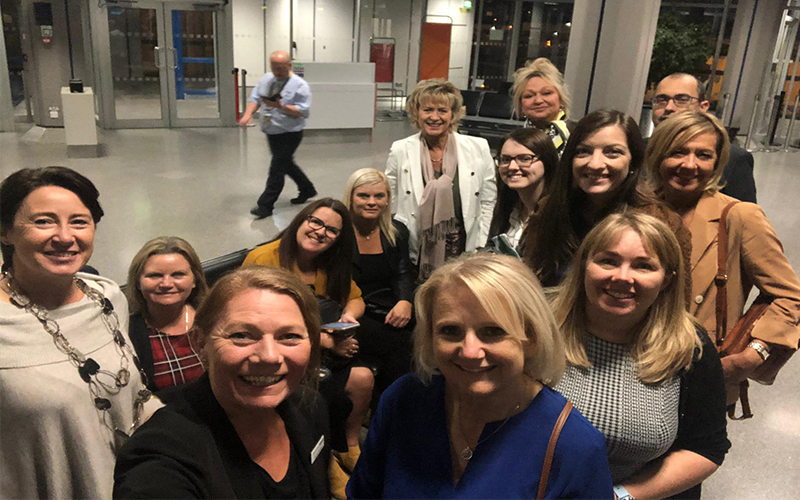Abbie’s Japan trip in 8 day’s
Japan is indeed becoming one of the top honeymoon destinations for newly-wed couples. Our honeymoon specialist, Abbie, was lucky enough to join Gold Medal and Travel 2 on a eight day tour to the beautiful cities of Japan. Read on to discover her highlights in Japan, the must-see attractions and her top tips for an unforgettable honeymoon to Japan.
Day 1) Osaka to Okayama
We flew from Manchester to Osaka with Lufthansa airlines with a short connection in Munich. The flight was good and it makes a great alternative if getting to London isn’t convenient, the flight takes around 13hrs in total depending on the connection. We arrived into Osaka Airport at around 6:20am and jumped straight on a local train to Osaka’s main train station to connect onto the Bullet train to Okayama.
The trains in Japan are out of this world! If you arrive early enough for your train you’ll see the staff cleaning the train, and the seats turning to face the way you’re travelling! They’re also extremely punctual, arriving and leaving the station to the second (although they allow themselves 30 seconds before they’re declared late!).
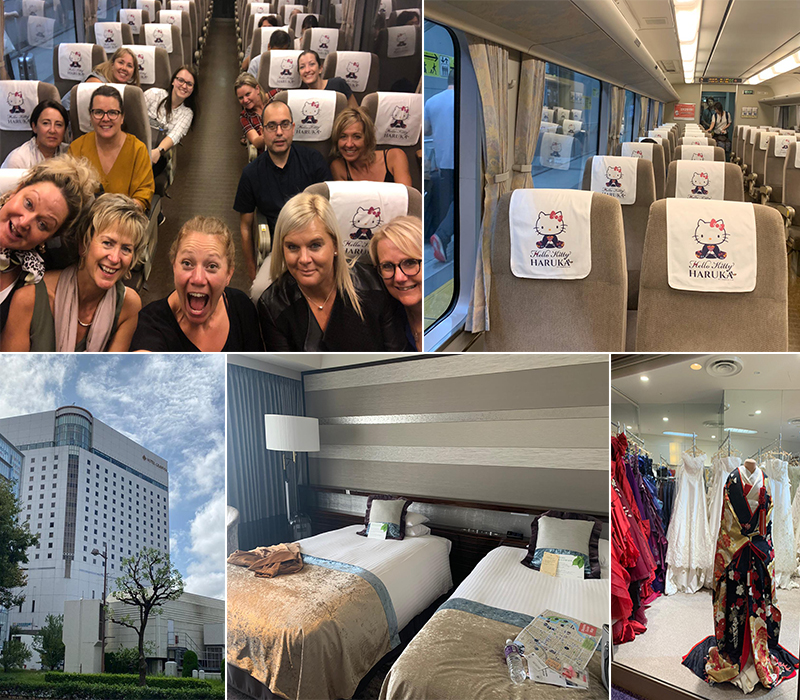
For our first few nights, we stayed at Hotel Granvia Okayama which is connected to the station by an underground walk way and in a very convenient location with great amenities such as a spa, pool, a few restaurants and even a wedding dress shop! After a swift check in we hit the ground running to explore Okayama!
We walked for around half an hour to reach the Castle and Gardens which are spectacular- well worth the visit! The Korakuen Gardens are ranked as one of Japan’s three best landscape gardens and incorporates a large pond with hundreds of Koi, streams walking paths and groves of cherry trees. It will cost you 400 Yen to visit the garden (approx. £3) and is well worth it! We also crossed over the river to visit Okayama castle which makes for some amazing photo opportunities, we didn’t get the chance to go inside, but if you do there are lots of displays of the history of the castle and the chance to wear traditional Japanese clothing.
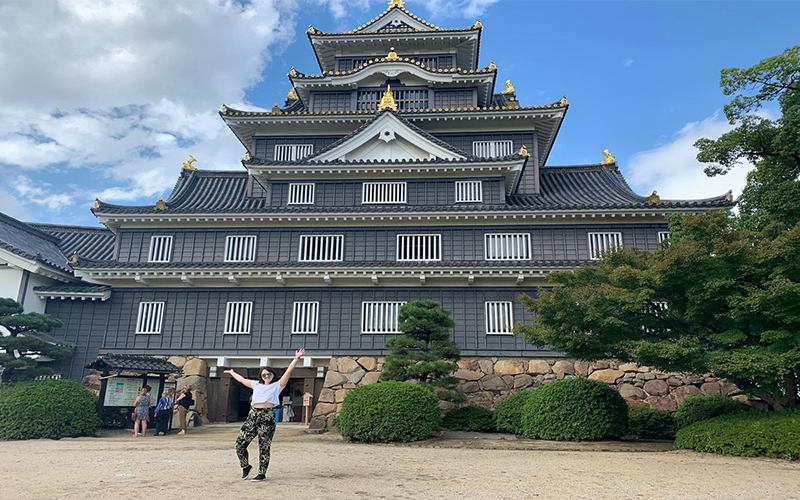
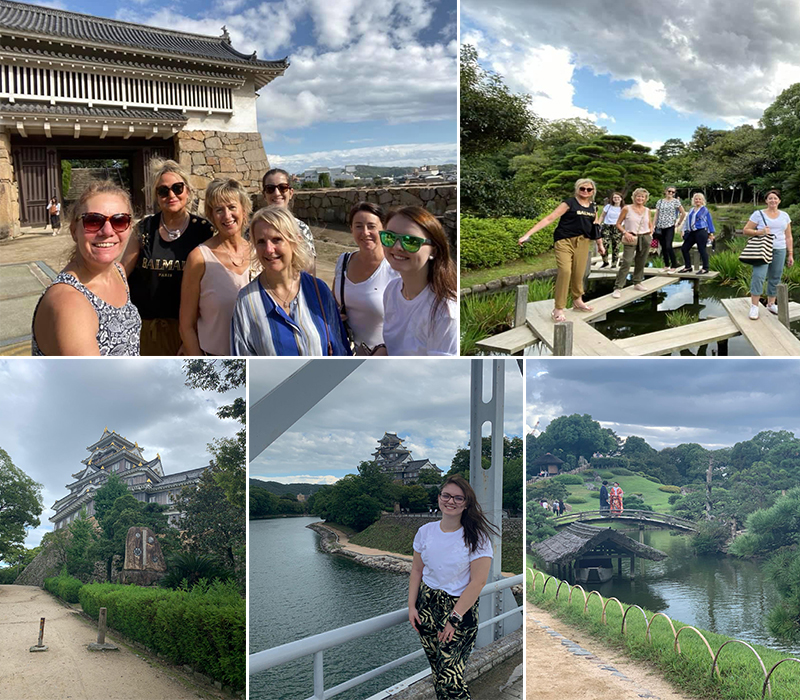
That evening we had our first experience of a traditional Japanese restaurant – We had a 7 course dinner which was amazing and consisted of raw fish, cooked meat, rice, soups and finished off with a traditional dessert.
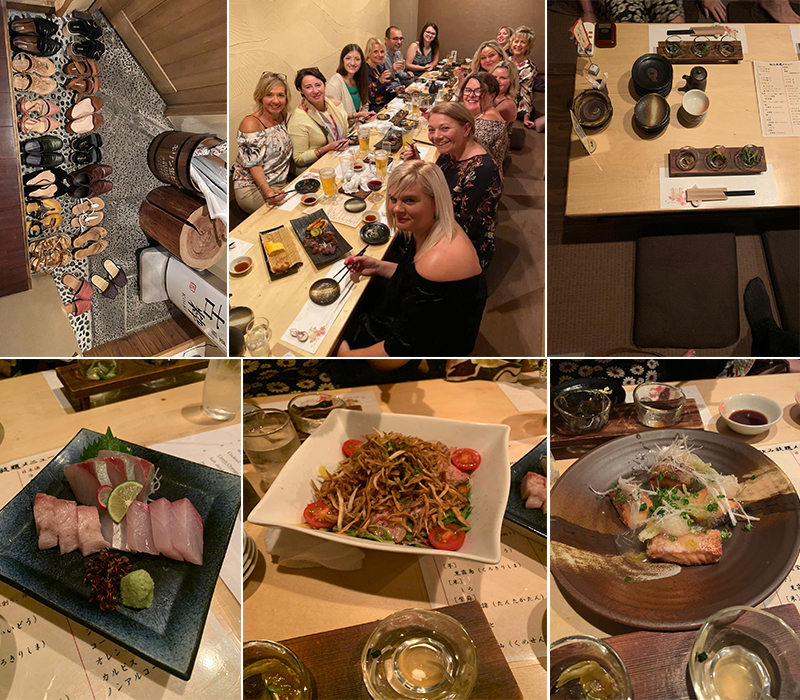
Tip – Be prepared to take off your shoes in traditional Japanese restaurants! Where there is Zashiki style seating (low traditional tables with cushions to sit on the floor) or where you need to step up to reach the dining area, you should remove your shoes at the entrance to the restaurant or before stepping onto the sitting area.
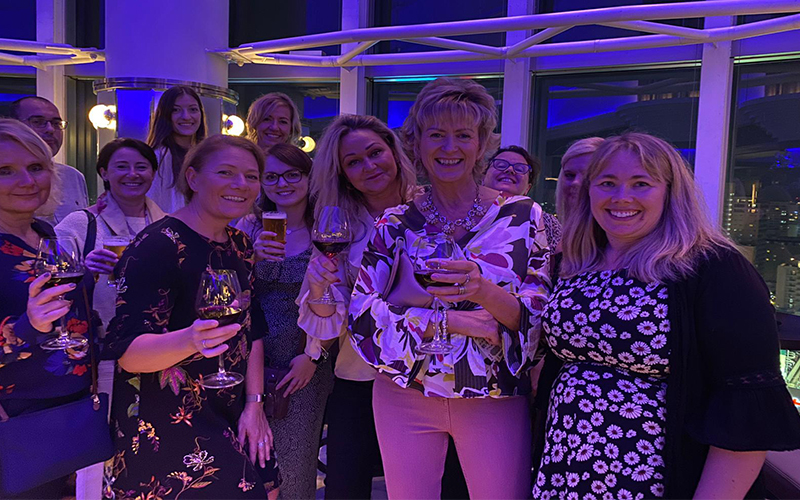
DAY 2 – Onomichi
The next morning, we headed out on a day trip to the quaint town of Onomichi, which is around a 90 minute drive from Okayama. Onomichi is famous for its ship building industry and its proximity to the islands of the Seto Inland Sea.
We first visited the ‘Temple Walk’ which is one of Onomichi’s top tourist attractions. It’s a designated walking route that connects 25 of the towns temples, the walk is around two and a half kilometers long and can take anywhere between an hour and a half to half a day to explore, depending on how long you spend at each temple.
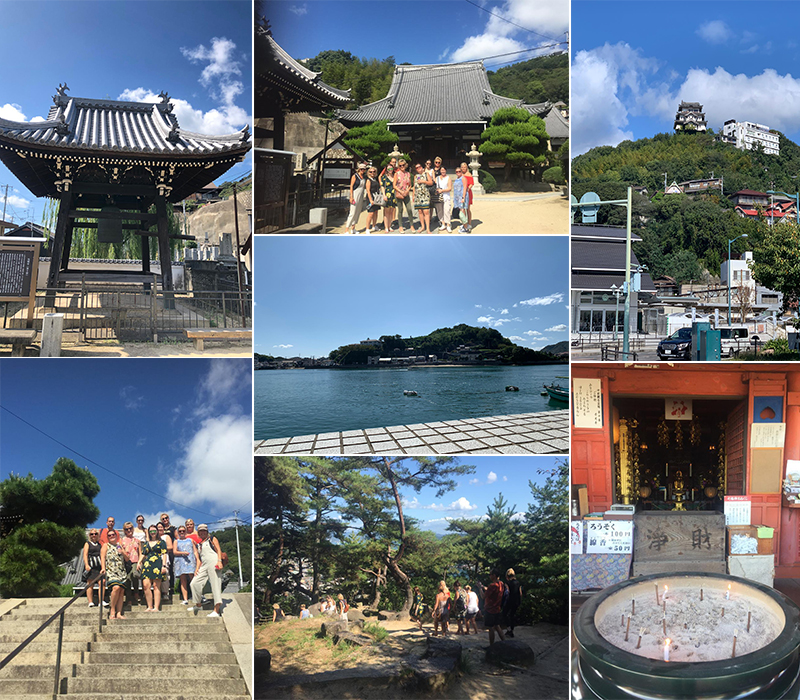
After Lunch, at a local hotel we headed to the Senkoji Ropeway (Cable car!). The short cable car journey takes you to the top of the small mountain that overlooks Onomichi. There’s a small observatory at the top which offers stunning views over the city and the Inland Sea and the main attraction is the Senkoji temple which is a short walk half way down the mountain. In cherry blossom season, the park is the main viewing spot in the town.
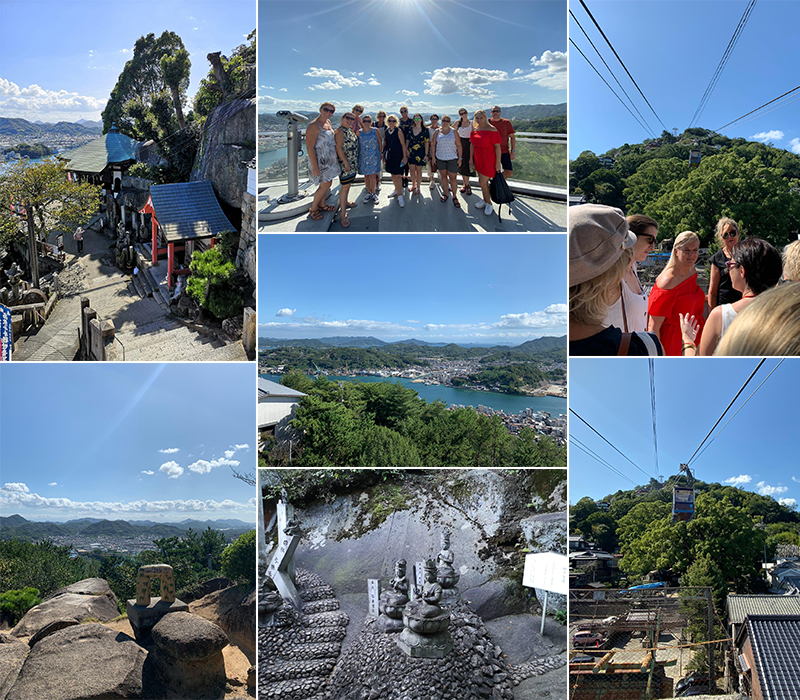
In the evening, we went to another traditional Japanese restaurant in Okayama which served ‘Shabu-Shabu’ Beef. Here you are served thin slices of beef, vegetables and noodles all of which you cook yourself in the boiling water. A brilliant and social experience that I would 100% recommend!
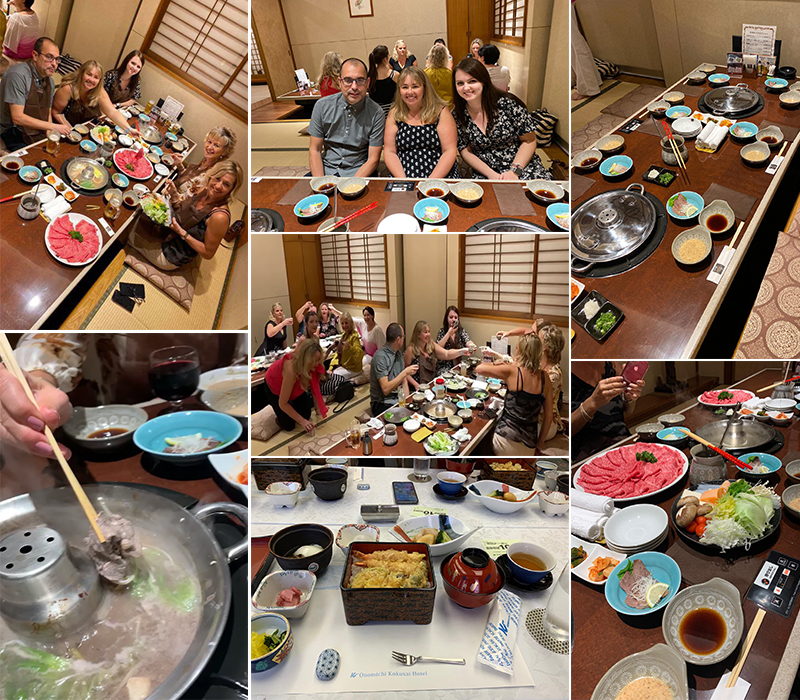
Afterwards we explored some of the nightlife of Okayama, there’s plenty of small bars as well as a couple of Irish and Australian bars, should you want a little more of what you’re used to at home!
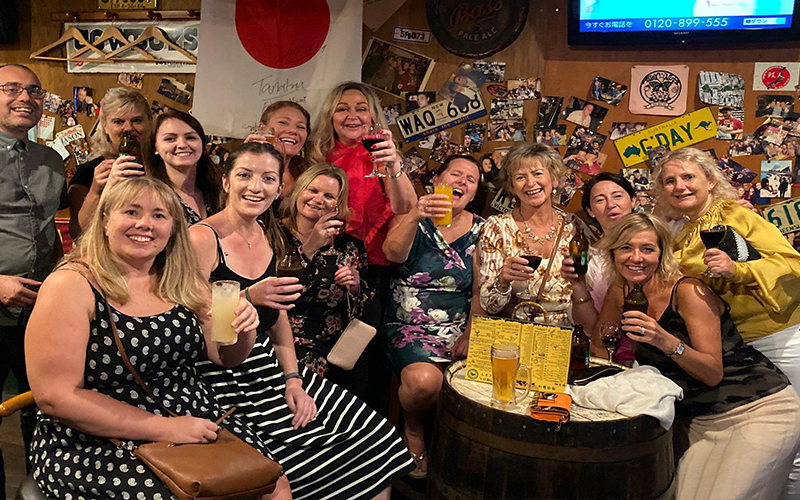
Tip – Most bars in Japan have a cover charge to enter and drink in the Bar, so just bear this in mind if the drink prices look very cheap, no doubt you will be charged to sit in the bar. However, if you’re planning to stay for a few this can work in your advantage!
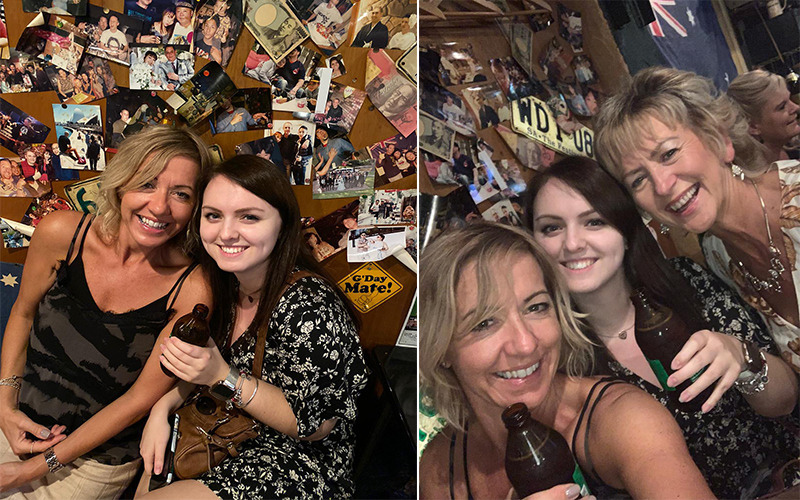
Day 3 – Kurashiki and Tokyo
For our last day in the Okayama area, we took a short train to Kurashiki which really does contrast the stark difference between the new and the old in Japan. When exiting the trains station you step into what looks like another bustling city of Japan, however after around a short 10 – 15 minute walk you arrive into Bikan-Chiku which is a well preserved Merchants quarter from the Edo era.
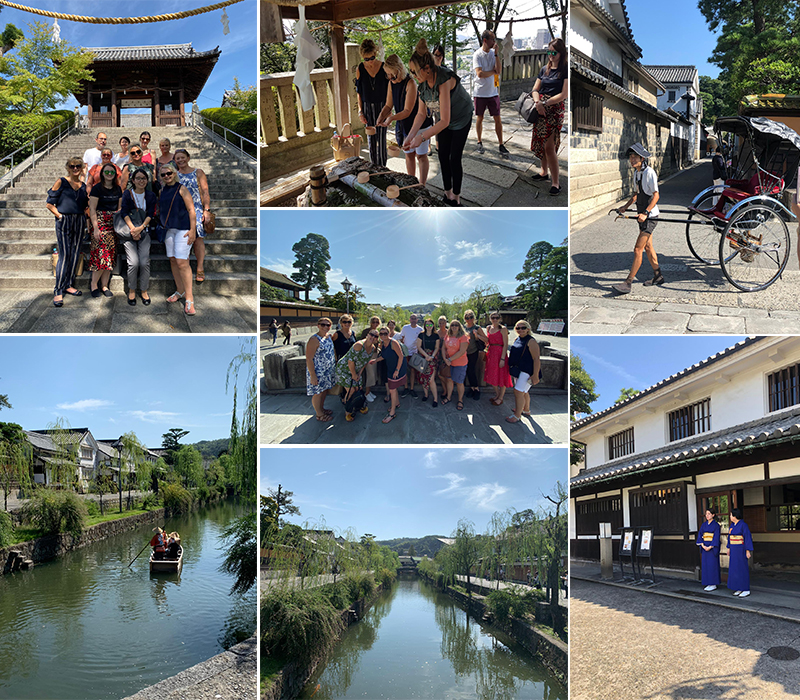
It’s a very quiet area with a willow lined canal, cobbled streets and small shops, houses and Ryokan’s (traditional Japanese style hotels). Here you really get a sense of how Japan used to be before technology took over the major cities. You can take boat rides down the canal, looking out for the Koi fish and just having a lovely stroll through the streets. You can also visit the Ohara Museum of Art, which was the first museum of Western art in Japan. It houses a large collection of European art including work by Monet, Picasso and Jackson Pollock to name but a few. There’s also a temple nearby at the top of the hill which you can visit.
In the afternoon, we returned to Okayama ready to catch the bullet train to Tokyo. We caught the Nozomi Train which is the fastest kind of bullet train and can reach up to 185mph!
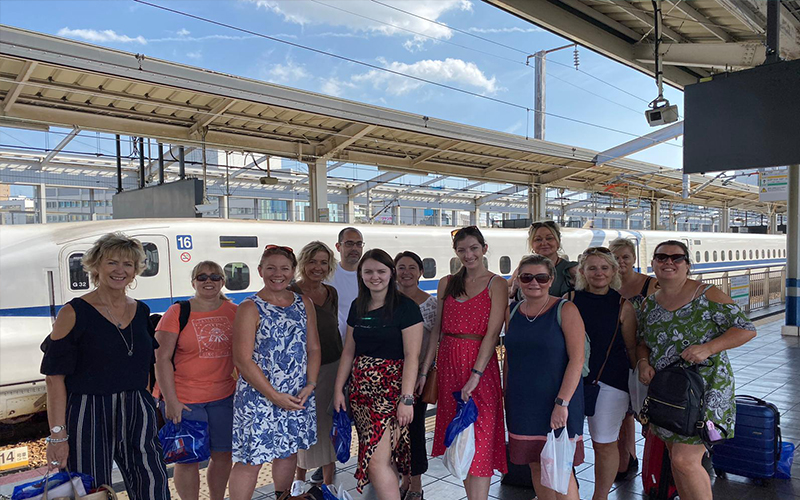
The journey takes around 3 and a half hours and if possible I recommend you sit on the left-hand side of the train as then you’ll be the first to spot Mount Fuji as it whizzes by!
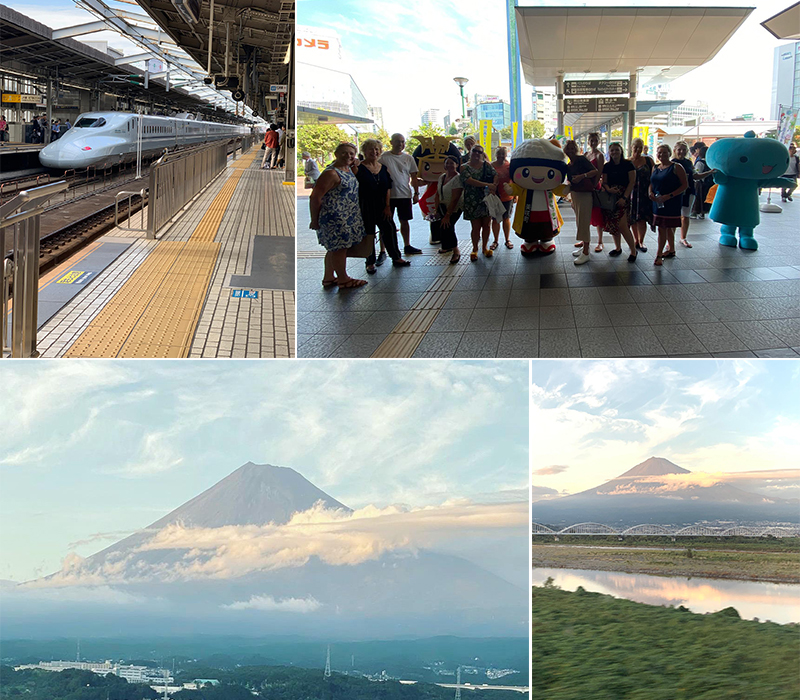
On arrival into Shinagawa Station we had our first real experience of just how busy Tokyo is! The station has an average of nearly 400,000 passengers each day but does serve as a great transport hub linking both the bullet train routes and the Yamanote line, which is the local rail way that runs a loop around all the main districts that you’ll probably plan to visit in Tokyo including Shinjuku and Shibuya.
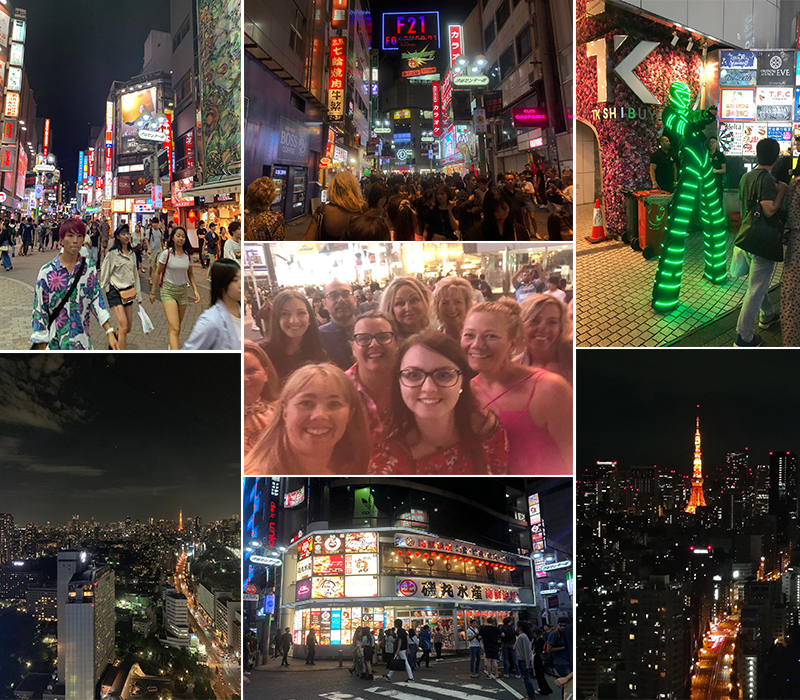
During our time in Tokyo we stayed and visited a few of the Prince hotels which are located near the station, these serve as great bases to get out and explore the city due to being so close to the station!
On the evening, after a magnificent buffet dinner at the hotel we went caught the train to Shibuya. Located here is one of the world’s busiest crossings, the Shibuya Scramble which was twice as busy as usual with Japanese and English Rugby fans celebrating their latest wins in the Rugby world cup! Shibuya is a maze of neon lights, shops, bars and restaurants to be explored and if you can get it the Starbucks overlooking the crossing is the best place to see the chaos as a whole!
Day 4 – Tokyo
On our next day we were free to explore Tokyo. We headed to the area of Harajuku which is a unique, fashionable area. You’ll find high end designer shops, contrasted with quirky café’s such as the famous monster café and we even came across a hedgehog café!
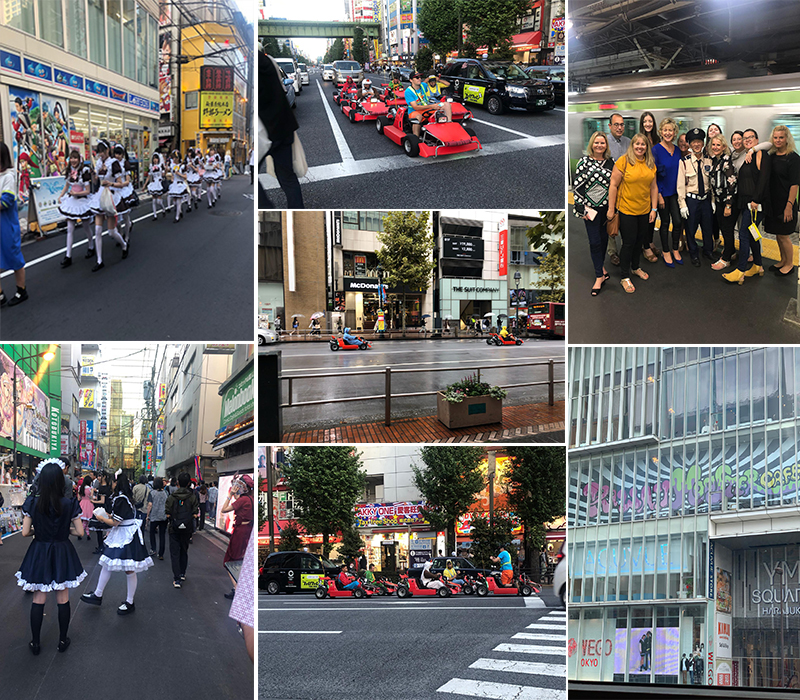
While we were in the area we also visited The Meiji Shrine. Entry into the shrine grounds is marked by a massive Torii gate, after which the sights and sounds of the busy city are replaced by a tranquil forest. The approximately 100,000 trees make up Meiji Jingu’s forest. At the middle of the forest, Meiji Jingu’s buildings also have an air of calm compared to surrounding city. Adjacent to the shrine is Yoyogi Park, which makes up a large forested area within the densely built-up city. The spacious shrine grounds and park offer walking paths that are great for a relaxing stroll. Later in the day we went to Shinjuku.
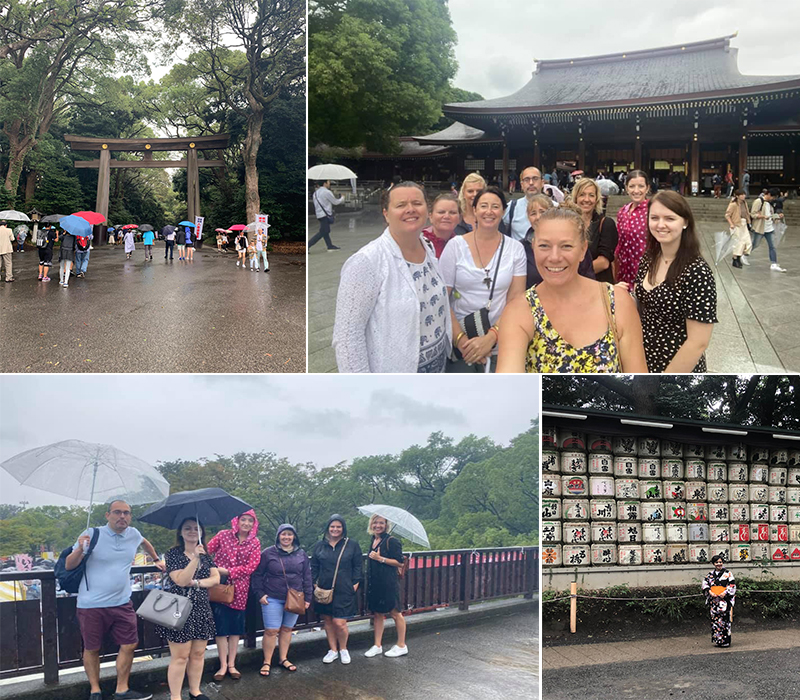
Shinjuku Station is the world’s busiest railway station, handling more than two million passengers every day. West of the station is Shinjuku’s skyscraper district, home to many of Tokyo’s tallest buildings, Northeast of the station lies Kabukicho, Japan’s largest and wildest red light district, while department stores, subterranean malls and electronic shops surround Shinjuku Station on all four sides.
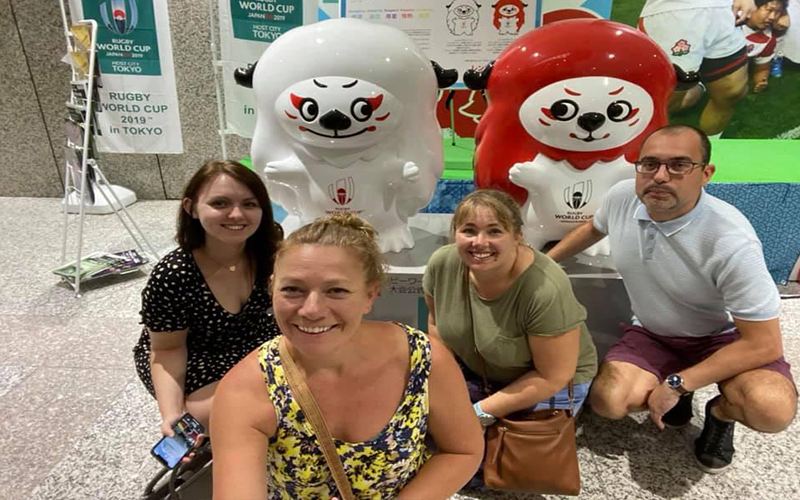
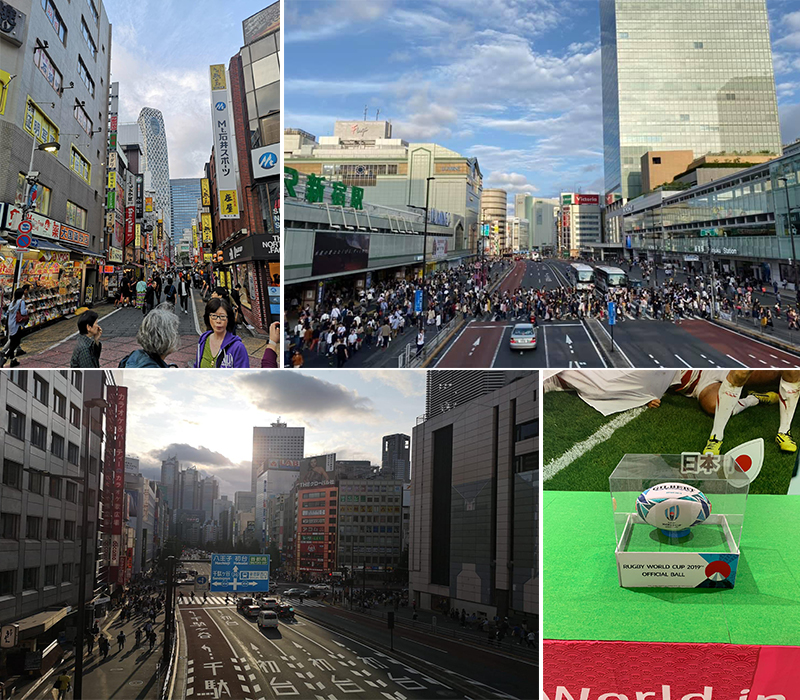
We visited the Tokyo Metropolitan Government Building which offers free observation decks which provide good panoramic views of Tokyo and beyond. The building has two towers, and with favourable weather conditions, famous landmarks such as Mount Fuji, the Tokyo Skytree, Tokyo Tower, Meiji Shrine and the Tokyo Dome can be seen from the observatories. The North Observatory remains open later at night, making it a popular spot to catch night views of the city.
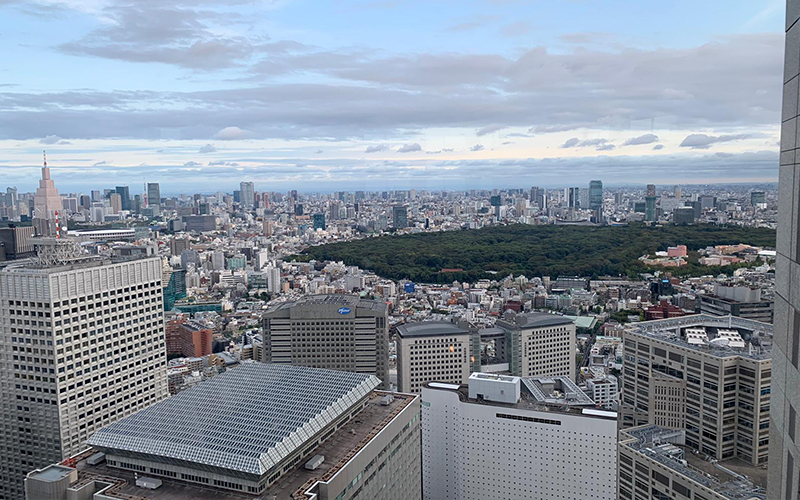
On the way back to the station we wandered through Golden Gai which is a small, nightlife district in Kabukicho packed with over 200 small bars and eateries. Most places are very small, seating only 5-6 customers!
Tip – The weather can change quickly in Tokyo, be sure to have an umbrella/waterproof as well as your sunglasses!
Day 5 – Sky tree and Ueno Park (Tokyo)
Today, we split into groups to explore different parts of the city, I visited the Tokyo Sky Tree and Ueno Park.
The Tokyo Skytree is the tallest structure in Japan and the second tallest in the world at the time of its completion. A large shopping complex with aquarium is located at its base. A fast and smooth elevator ride takes visitors to the top floor of the first observation deck, the tower has two observation decks which offer spectacular views out over the city. The two decks are located at heights of 350 and 450 meters respectively, making them the highest observation decks in Japan!
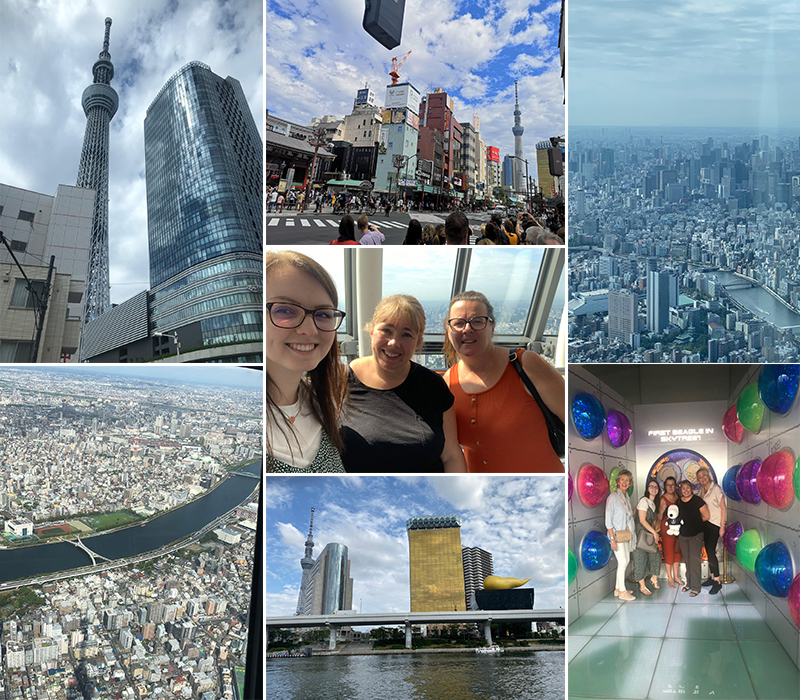
After a browse around the mall at it’s base and traditional Japanese lunch we then headed for Ueno Park. Ueno Park is a large public park and the grounds were originally part of Kaneiji Temple, which used to be one of the city’s largest and wealthiest during the Edo Period. The park was Japan’s first Western style park and opened to the public in 1873. Ueno Park is famous for the many museums found on its grounds, especially the Tokyo National Museum, the National Museum for Western Art, the Tokyo Metropolitan Art Museum and the National Science Museum. It is also home to Ueno Zoo, Japan‘s first zoological garden. During Cherry Blossom season, Ueno Park is one of Tokyo’s most popular and lively cherry blossom spots with more than 1000 cherry trees lining its central pathway. There are also a few temples and shrines to visit within the park.
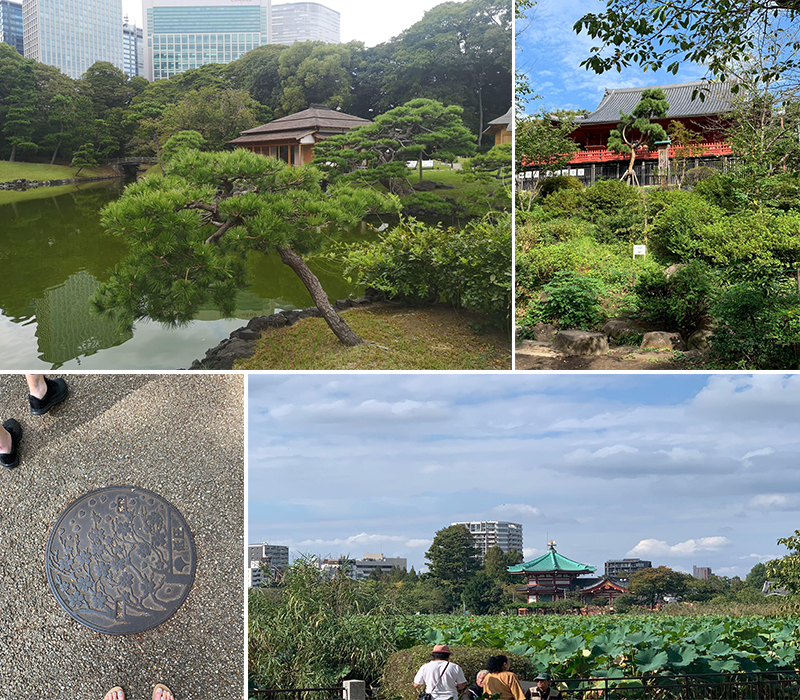
The other group visited the Tokyo Tower, the Zojo-ji Temple, and the Hamarikyu Japanese Garden.
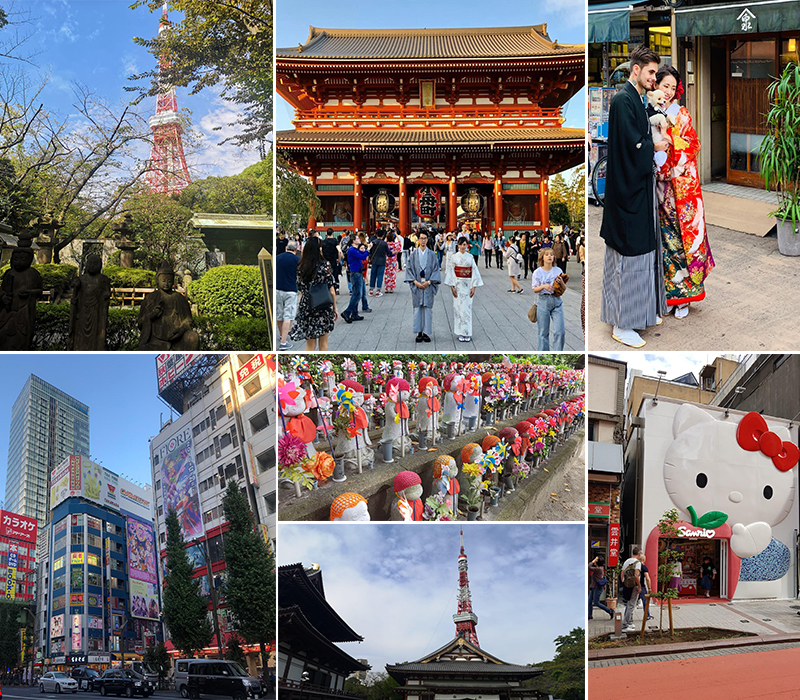
As we were in Tokyo to visit ABTA’s annual travel convention that evening we attended the opening party which included a traditional Japanese Dance performance, Geisha’s, Ice sculptors and more!

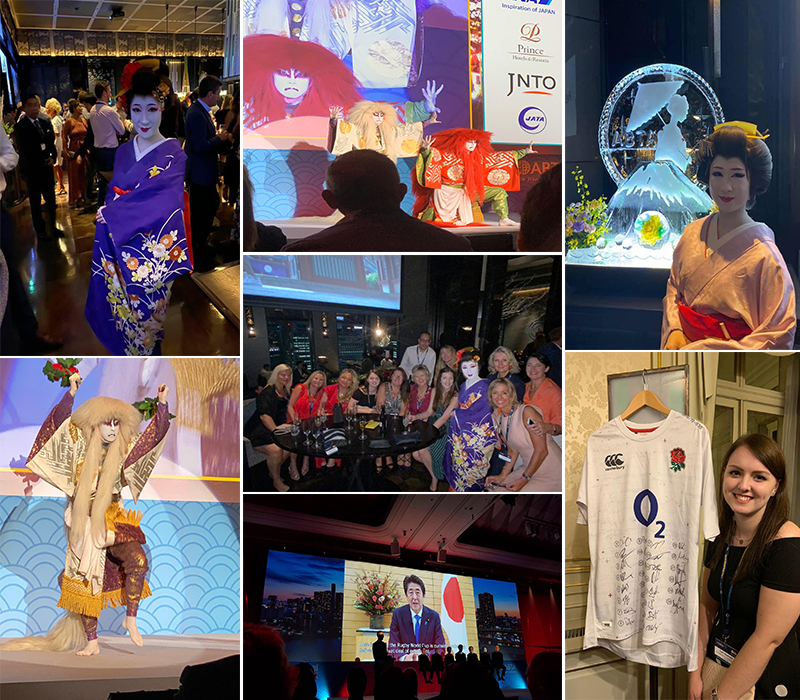
Day 6 – Convention and Gonpachi
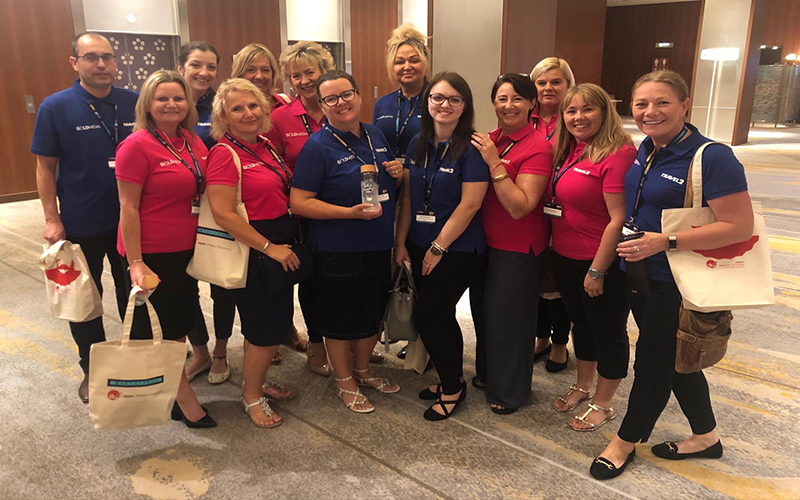
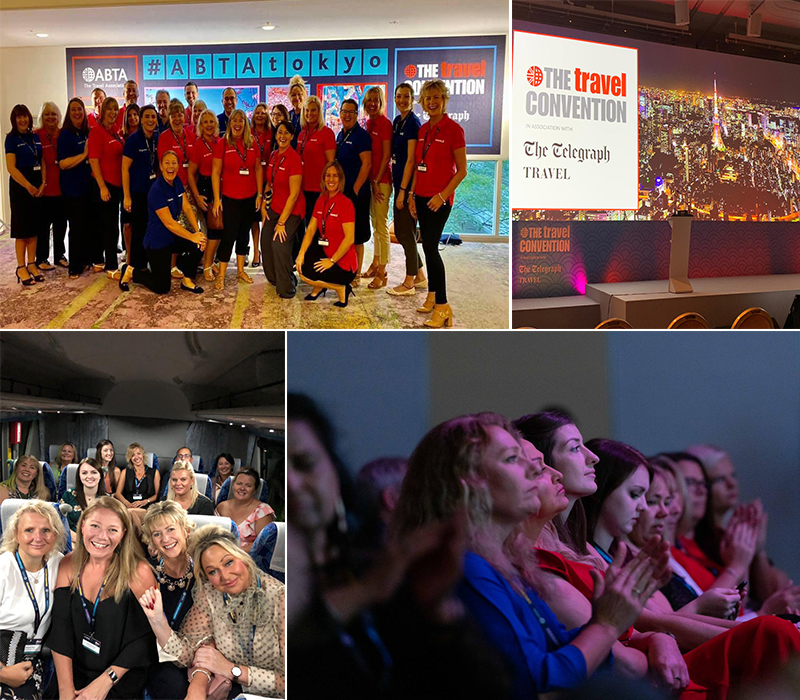
After a busy day at the convention listening to lots of speakers and learning more about Japan in the evening we headed to Roppongi Hills and were lucky enough to go to dinner at Gonpachi aka the ‘Kill Bill Restaurant’! This is an experience not to miss, Quentin Tarantino had dinner and got inspired by the interior of the restaurant that he based the set of one of his famous “Kill Bill” fight scenes on the restaurant. We had a fantastic meal, there’s a huge variety of options and you’ll find nearly every popular Japanese dish on the menu!
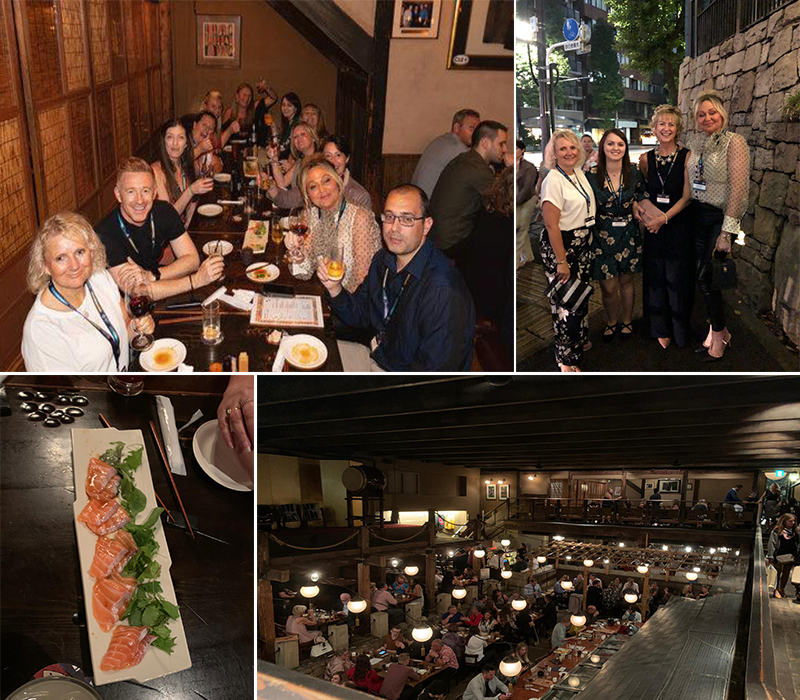
Day 7 – Convention and closing party
On our last day, we attended more business sessions at the convention before the closing party on the evening, where we had the chance to try on traditional Japanese dress!
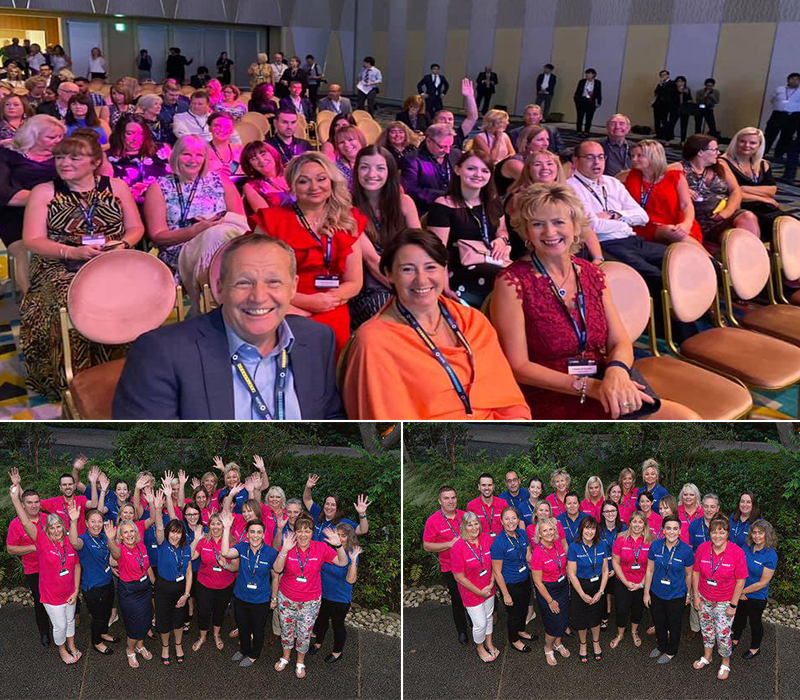
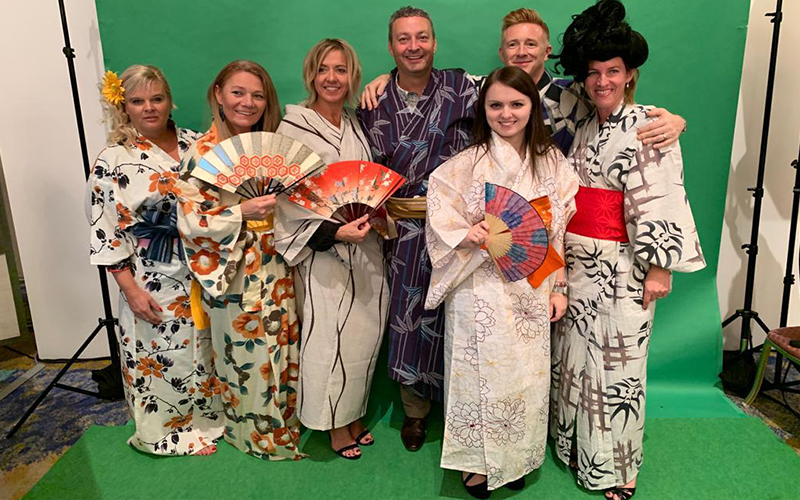
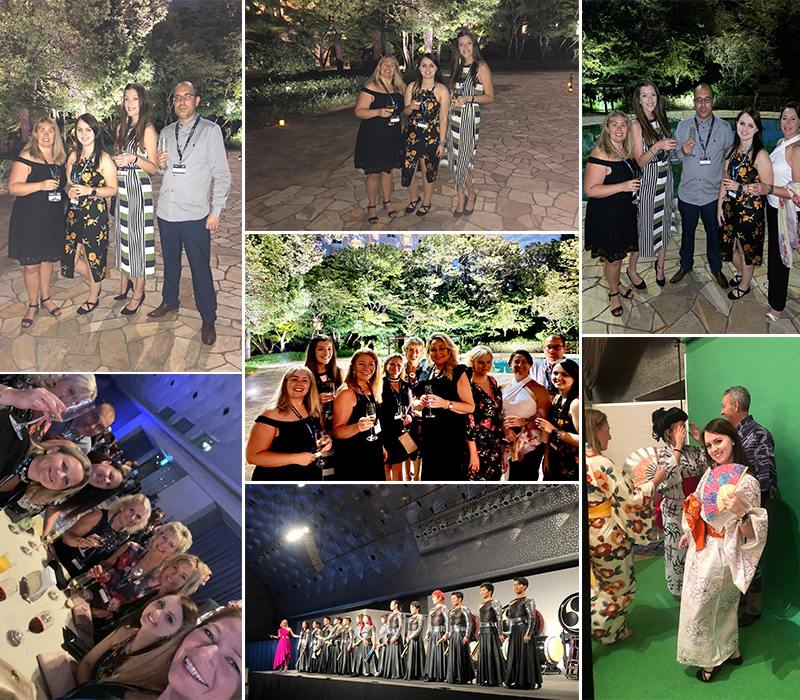
The next morning, we flew home with All Nippon Airlines which was a great experience and I highly recommend the airline.
Overall, experience of Japan?
Overall, my experience of Japan was amazing! The contrasts of the traditional and the modern took my breath away and I loved trying new foods and experiencing their very unique culture. The people in Japan are among the most friendly and polite in the world, and although not many speak English, were keen to try and help if you were a little lost! I can’t wait to go back and explore more of this wonderful and one of a kind country and would recommend for any traveler to go and experience it for themselves!
Any tips and recommendations for honeymooners who want to visit Japan?
- Experience as much as you can! I’d recommend giving yourself 3-4 days in each area you visit as there is so much to explore both in the cities and day trips.
- Definitely purchase the Japan Rail Pass, it makes travel so easy and convenient and these can only be purchased outside of Japan
- Be open to trying new things – Some of the food may seem a little strange at first, but dive in and try as much traditional food as you can, you may be surprised about how much you enjoy it!
- Try to brush up on your Chop Stick skills before you travel, it’s rare that you’ll see a knife or fork!
If you are planning your Japan honeymoon, contact one of our Honeymoon Specialists on 0121 440 6268 or email us on quote@honeymoondreams.co.uk

